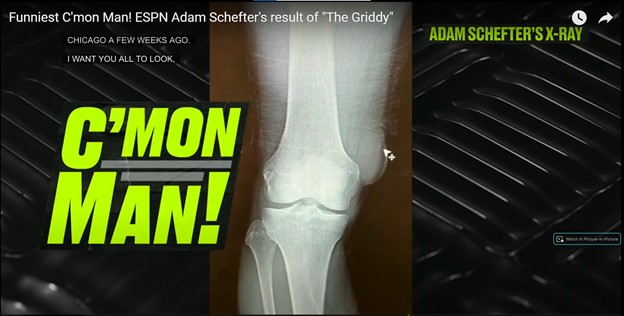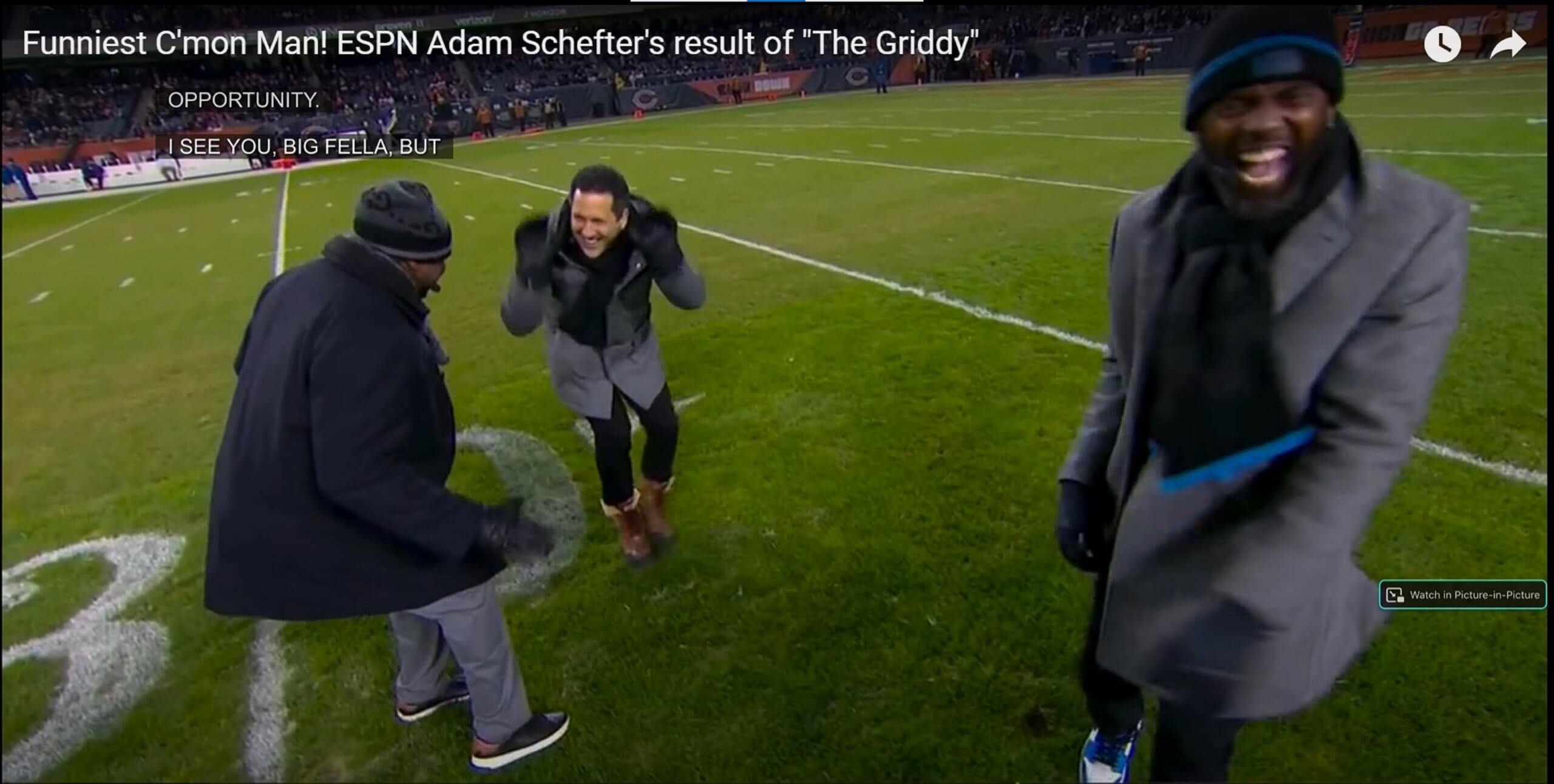Getting into the Nitty “Griddy” of Adam Schefter’s Meniscus Injury
We are officially in the last phase of the NFL offseason, NFL training camp season. Players across the league have been using the offseason to train and recover before the new season starts on September 8, with the Buffalo Bills taking on the reigning Super Bowl champions, the Los Angeles Rams. As sports fans, we enthusiastically wait for the return of our favorite athletes, reporters, and touchdown dances.
Adam Schefter, senior NFL Insider at ESPN, is known as one of the top football reporters in the nation. However, last NFL season, in addition to reporting on the athletes, he gave us updates on how he himself was recovering from a torn meniscus he likely sustained performing the leading dance craze, “The Griddy.” Schefter was dancing alongside his reporting team on Soldier Field before the Chicago Bears faced off against the Minnesota Vikings during “Monday Night Football” in Week 15 of the previous NFL season. He was learning it from Justin Jefferson, Vikings receiver who popularized the touchdown dance invented by Allen Davis. On “Monday Night Football,” Schefter gave thanks to our very own Dr. Eric Freeman of South Island Orthopedics for treating his torn meniscus. Adam Schefter has since recovered. Let’s take a deeper look into this common football injury that we unfortunately will likely see again in players throughout the season.
What is a Torn Meniscus?
The medial (inner) and lateral (outer) meniscus are wedge-shaped pieces of fibrocartilage located between your femur (thigh bone) and tibia (shin bone) that function to prevent the bones of the knee joint from grinding against each other, allowing for smooth movement. The meniscus also functions to properly distribute weight across the knee joint. The majority of meniscus tears we hear about as sports fans fall into the category of acute meniscus tears, which occurs as a result of forceful twisting of the knee – commonly seen in football players who rapidly change directions to juke out opponents. This injury can occur as a result of any movement that involves knee twisting. In this case, as seen in a recent interview on ESPN, Schefter reported that he thinks he tore his meniscus while twisting his knee as part of “The Griddy” dance, since he started feeling pain soon after the dance.
How is a Torn Meniscus Treated?
Treatment for a meniscus tear depends on where the tear is located and how severe the tear is. Your orthopedist will also consider your age, how active you are, and other health-related issues. For most people, treatment does not require surgery. Instead, your physician will recommend RICE – rest, ice, compression, and elevation, pain and anti-inflammatory medications, physical therapy stretching and exercise, and cortisone injections. In severe cases, you may need arthroscopic surgery, which requires meniscus removal or repair. The physicians and staff at South Island Orthopedics are dedicated to helping you manage your knee pain and knee injuries.

What Should I Expect during Arthroscopic Meniscus Surgery?
The most common procedure for torn meniscus surgery is knee arthroscopy. The word “arthroscopy” comes from “arthro” meaning joint, and “scope” meaning to look. During this procedure, orthopedic surgeons make small incisions in the skin, then insert tiny lens and lighting systems. The arthroscope is attached to a camera that displays the live feed of the joint on a video monitor. The orthopedic surgeon can then clearly see the tears in the meniscus.
The surgeon then makes additional incisions to treat the tear, either through a partial meniscectomy or a meniscus repair. In a partial meniscectomy, the surgeon removes the damaged meniscus tissue. The remaining meniscus edges are smoothed out. In a meniscus repair surgery, the surgeon stitches the torn meniscus back together.
What is the Recovery Time for a Torn Meniscus?
Patients recover faster from meniscectomy procedures than from meniscus repair procedures. Full recovery from meniscus surgery ranges from six weeks to three months. To help you regain full strength, your physician and physical therapist will work to create a rehabilitation plan. Rehabilitation typically focuses on decreasing pain and swelling, restoring range of motion, muscle strength, and endurance, and optimizing neuromuscular coordination.
Your orthopedic surgeon and physical therapist may recommend that you exercise for about 20 to 30 minutes, 3 times per day. Initial exercise routines may include hamstring contractions, quadriceps contractions, and isometric straight leg raises. Leg raises will help to strengthen the quadriceps muscle to provide further joint support. Follow the rehabilitation exercise plan as directed. Proper exercise routines will restore strength and mobility to your knee.
What Does Recovery and Care Look Like After a Torn Meniscus?
Each patient will recover at their own pace. Your physician and physical therapist will make certain recommendations to ensure your recovery at home goes well.
In the days following surgery, be sure to rest when you are tired. Maintaining proper sleep hygiene will speed recovery. Sleep with your knee raised by placing a pillow underneath your foot. To further reduce swelling and pain, you can apply ice or cold packs and elevate your knee for about 20 minutes at a time, every couple hours. Place a cloth between ice and your skin. Use your knee brace and crutches as recommended by your physician.
If you have questions about meniscus tears or if you are experiencing knee pain, the physicians and staff of South Island Orthopedics are very experienced in a wide range of orthopedic conditions and are committed to providing personalized care in state-of-the-art facilities across Long Island. To schedule an appointment with one of our orthopedic knee specialists, click here.
Posted in: Knee, Pain Management, Sports Medicine

